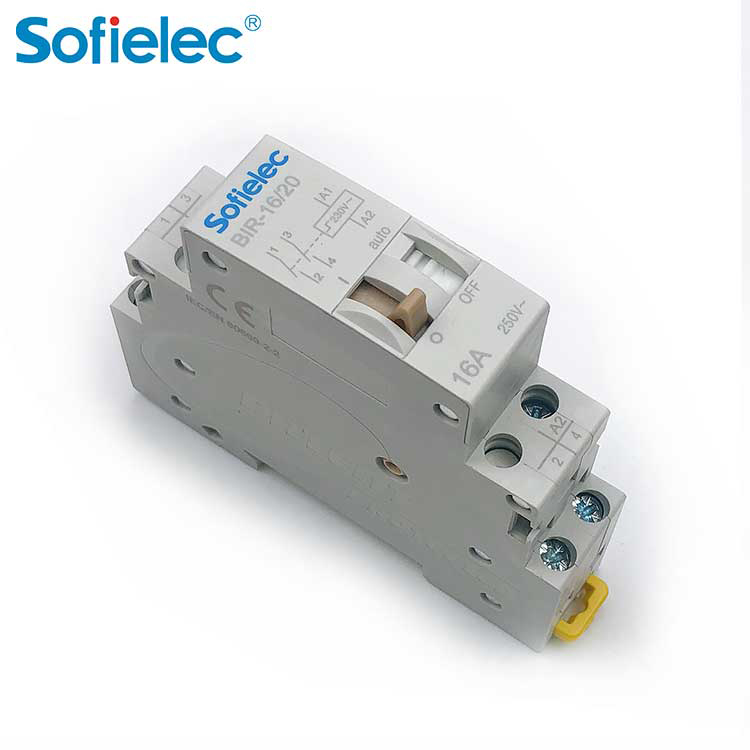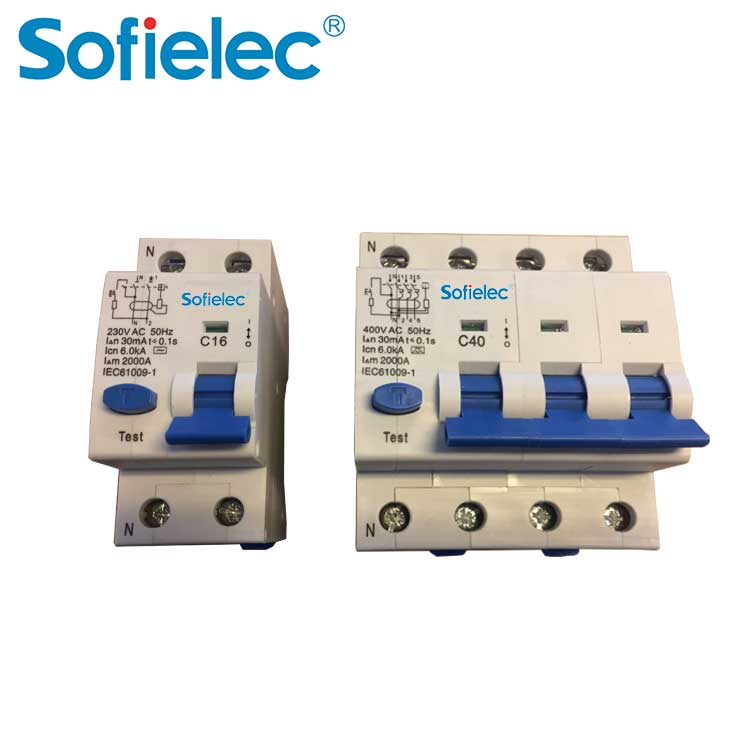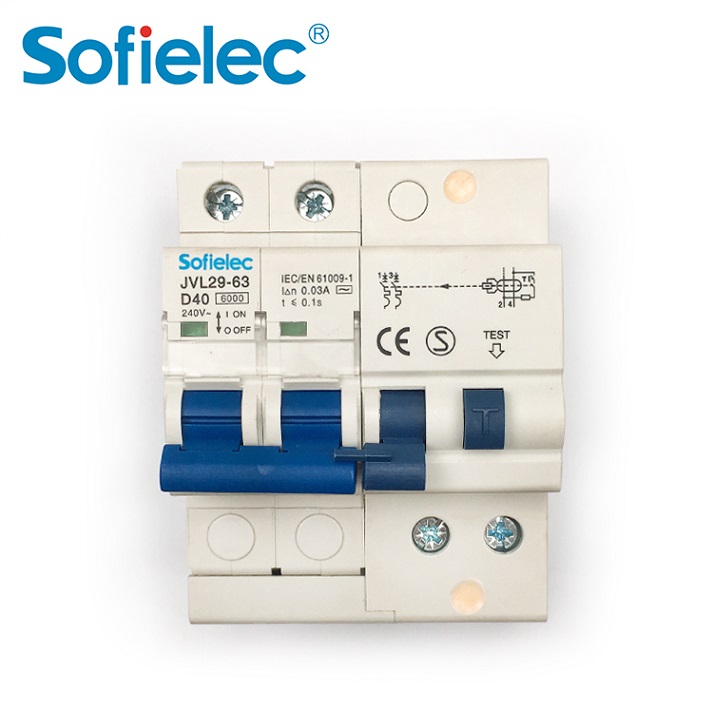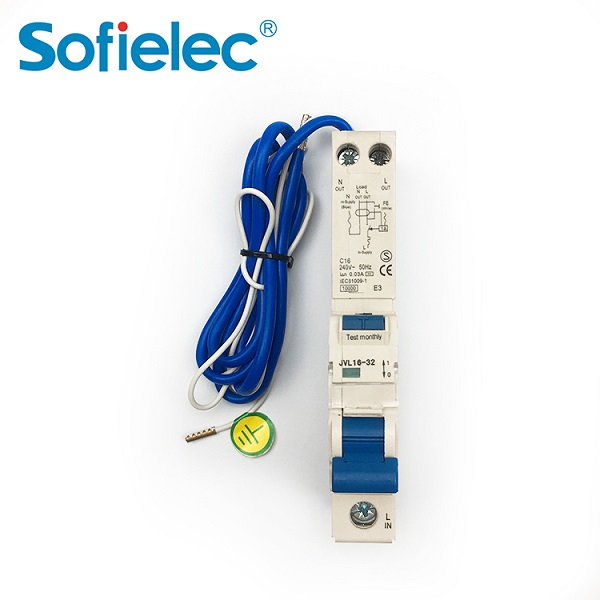| Categories | impulse relays |
| Model | BIR-16/10 |
| Dissipated power (during the impulse) | 1, 2P: 19 VA |
| Illuminated PB control | Max. current 3 mA (if > use an ATLz) |
| Operating threshold | Min. 85 % of Un in conformance with IEC/EN60669-2-2 |
| Duration of the control order | 50 ms to 1 s (200 ms recommended) |
| Response time | 50 ms |
| Frequency | 50 Hz or 60 Hz |
| Maximum number of operations per minute | 5 |
| Maximum number of switching operation a day | 100 |
| Insulation voltage (Ui) | 440 V AC |
| Pollution degree | 3 |
| Rated impulse withstand voltage (Uimp) | 6 kV |
Impulse relays are used
● Closing of the impulse relay pole(s) is triggered by an impulse on the coil.
● Having two stable mechanical positions, the pole(s) will be opened by the next impulse. Each impulse received by the coil reverses the position of
the pole(s).
● Can be controlled by an unlimited number of pushbuttons.
● Zero energy consumption.
Connection

Operation


Technical data
| Control circuit | |
| Dissipated power (during the impulse) | 1, 2P: 19 VA |
| lluminated PB control | Max. current 3 mA (if> use an ATLz) |
| Operating threshold | Min.85 % of Un in conformance with IEC/EN60669-2-2 |
| Duration of the control order | 50 msto 1 s (200 ms recommended) |
| Response time | 50 ms |
| Power circuit | |
| Voltage rating (Ue) 1P,2P | 24...250 V AC |
| Frequency | 50 Hz or 60 Hz |
| Maximum number of operations per minute | 5 |
| Maximum number of switching operation a day | 100 |
| Additional characteristics to IEC/EN 60947-3 | |
| Insulation voltage (Ui) | 440V AC |
| Pollution degree | 3 |
| Rated impulse withstand voltage (Uimp) | 6kV |
| Endurance (O-C) | |
| Electrical to IEC/EN 60947-3 | 200,000 cycles (AC21) |
| 100,000 cycles (AC22) | |
| Overoltage category | IV |
| Other characteristics | ||
| Degree of protection(IEC 60529) | Device only | IP20 |
| Device in modular | IP40 | |
| enclosure | Insulation class II | |
| Operating temperature | -20°C to +50°C | |
| Storage temperature | -40°C to +70°C | |
| Tropicalization (IEC 60068-1) | Treatment 2 (relative humidity 95 % at 55°C) | |
Dimensions (mm)

> What is mccb and mcb?
MCCB, for large - scale industrial and commercial use, handles high - current loads, detecting over - currents with thermal - magnetic or electronic trip units. MCB,...
> Is Circuit breaker AC or DC?
Circuit breakers can be designed for both AC (alternating current) and DC (direct current) applications. However, AC and DC circuit breakers have some differences in...
> How to use Circuit Breaker?
Select a suitable circuit breaker based on circuit requirements, install it in the electrical panel after power - off, let it monitor current during normal operation...
> Market Prospect Analysis of Circuit Breakers
The circuit breaker market has witnessed steady growth over the past few years, driven by the expansion of power infrastructure, industrial automation, and the burge...








